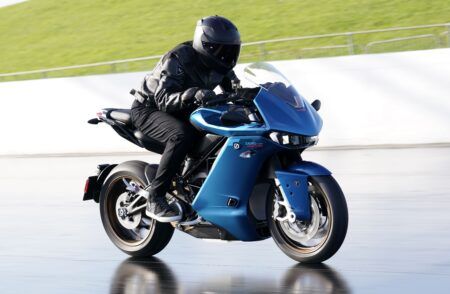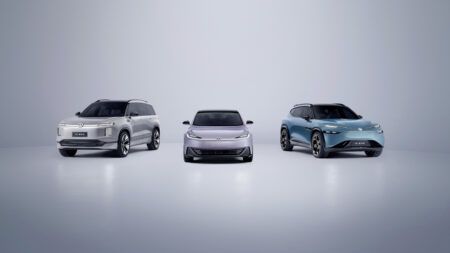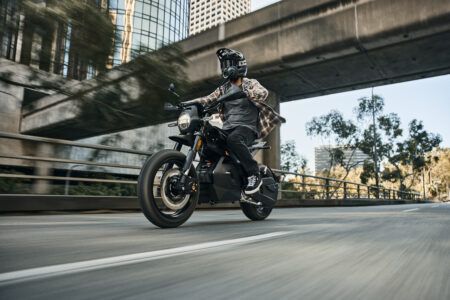Marco Montepeloso, head of product planning at Jeep, promises John Challen that an electric Jeep will be just as fun as one with ICE power
In September 2022, Jeep announced its plans for full electric vehicles as part of a sustainable transformation to become the leading electrified SUV brand in the world. That’s quite a statement from a manufacturer whose model lineup doesn’t immediately scream “Electrify me!”, and also one that does a sizeable amount of business within North America, which lags behind Europe when it comes to transitioning away from ICE models. Regardless, the plan has been set in place and Marco Montepeloso, head of product planning at Jeep, is committed to seeing it through.
“The plan calls for the introduction of four all-electric SUVs in North America and Europe by the end of 2025,” he explains. “Beyond that, by 2030, 50% of Jeep brand sales in the US – and 100% in Europe – will be all-electric by 2030. The plan is in full support of the net zero carbon emission targets set by Stellantis – carbon net zero by 2038 and a reduction of greenhouse gas emissions of 75% by 2030.”
To kick off the process, Jeep’s first battery-powered model (for Europe, anyway) is the Avenger, which offers a driving range of 400km, but with the ‘go anywhere’ capabilities that people associate with Jeeps. As off-road capabilities are arguably the main reason for a lot of people buying Jeeps, it was essential to retain the same level of performance and experience that ICE models do.
Thankfully, Jeep won’t be left to its own devices to meet its targets because it will have access to the existing knowledge base and resources within its Stellantis parent company to achieve its aims. “The benefit of being part of a big organisation such as Stellantis is that we can leverage on a huge amount of investment,” explains Montepeloso. Stellantis has announced tens of billions of dollars’ worth of investment in EVs between now and 2025, which includes four new platforms and the value chain. For example, there is a 50/50 joint venture with Nidec to produce e-motors, the first of which features on Avenger and is more efficient and powerful (156hp) than its predecessors.
To meet the demand, Stellantis is planning a new generation of component production sites. “We are planning to build five gigafactories around the world – the first one being in France for the e-motors – and also investing in joint ventures to develop new technologies such as solid-state batteries,” explains Montepeloso. “All these aspects will be beneficial to Jeep but, at the same time, we need to retain our value, freedom, authenticity, passion – essentially our promise to the customer. Even though they will be EVs not combustion-engined cars, they will still have to have the same Jeep values and enable the customer to go anywhere and do anything. For example, we will continue to have the required ground clearance and shorter overhangs to achieve the best approach, departure and breakover angles – and to keep the weight of the car under control.

Global plans
So, when it comes to Europe, Jeep’s plans look sound. And they are off to a very positive start with Avenger getting a positive reception from the industry and customers alike. But, on the other side of the Atlantic, things are a bit different. “At the moment in the US things are a step behind Europe and battery electric vehicles are only really a hot topic on the coasts, especially the east,” says Montepeloso. “However, the latest regenerative initiatives by the government mean that there is plenty of scope for private sector investment there as well. So, we expect that sales of pure battery electric models could also increase exponentially in the US.”
Another issue is the vehicle lineup, which couldn’t really be described as truly ‘international’. “The extremes of our range don’t fit the global market needs – as is the case of Avenger in the US or Grand Wagoneer in Europe,” Montepeloso reasons. “But the plan is for everything in-between to be sold globally and to meet the needs of all the market.”
For a lot of manufacturers, the key concerns around the batteries in an electric car are how far it will enable the vehicle to run. For Jeep, however, almost as much of a concern is how well it is protected – something that other OEMs don’t have to consider to the extent that a 4X4 auto maker does. “Like most other electric vehicles, the range and charging times are the most important factors to get right,” says Montepeloso. “But, at Jeep, we really want to take care about the weight as well as the protection of the battery pack and underground clearance.
“On Avenger, the battery pack is not underneath the floor, but is under the front and rear seats and within centre console,” he explains. “Therefore, it’s further away from the ground, more protected and has virtually zero impact on the interior space.”

Function over form
Another big challenge when it comes to EVs is aerodynamics – not an easy thing to maximise when you’re looking at big bulky machines! “There is a clear trend in the market, pushed by the range, to have sleek-looking vehicles, but that is not Jeep,” says Montepeloso, adding that the company will not jeopardise the functionality of its products, or the size and space available. “We really need to think about every technical aspect and every shape when the vehicle is designed. In the case of Avenger, despite its bold aspect and proportion, it is very aerodynamic and actually one of most efficient in its segment when it comes to drag coefficient.”
For the battery pack itself in future Jeep products, being part of the Stellantis family is a game-changer. “Jeep can take advantage from being part the Stellantis family, so with that we need to find the sweet spot between range, weight and costs of the battery,” says Montepeloso. In return, Jeep has brought a new element to the battery development process. “There is a new standard validation now because we tested the vehicle in extreme conditions and the battery pack can also withstand extreme conditions,” he reveals. “We also have a new powertrain calibration that is standard on Avenger. It’s the first time we’ve offered that system on a front-wheel drive vehicle and comes with six modes: sand, mud, snow, eco, sport and normal to help manage the power available on a battery electric vehicle in every challenging condition a driver may find themselves in.
Dynamically, there have been new elements and upgrades that could benefit the wider family beyond Jeep. “We have improved the suspension behaviour with dedicated tuning , such as increasing the damping force by 20% to improve the body motion control on both smooth and rough roads. This translates in -20% of vertical acceleration, -12% of body roll acceleration, and -18% of roll pitch acceleration. Therefore, the vehicle is more controlled in almost every condition.”
Montepeloso also highlights another innovation that is growing in popularity. “V2X [vehicle to everything] charging is really interesting,” he says. “One Jeeper using their car to help another fits perfectly in the spirit of the Jeep community.”
The world is rapidly moving towards electric power, but manufacturers are – in the short-term, maybe – continuing to investigate e-fuel possibilities and Jeep is a part of those conversations. “Within Jeep, we remain focused on BEVs,” confirms Montepeloso. “However, e-fuels can be part of a toolbox to reduce the carbon emission and Stellantis is finalising e-fuels testing on more than 28 internal combustion engines that have been built since 2014 in Europe. So, for us, the e-fuel could be an enabler to reduce the carbon emission our existing car parc.”
A fuel-cell Jeep? Never say never: “There is no plan to have any hydrogen applications on Jeep, but last year Stellantis launched the hydrogen version of an LCVs,” says Montepeloso. “So we have the knowhow and technology, and the ability to react if the situation changes in the future.”

Get connected
Away from the vehicles, there is plenty of effort being made to help the transition and to make EV driving appear more accessible than some might think. “We are preparing the path for our EV customer in a number of ways. For example, we are investing in solar powered charging station on 80 trails, where Jeep drivers can charge their vehicle or use the electricity while camping,” says Montepeloso. “We want to ensure that we can offer our future EV Jeep customers the same unique Jeep experience as they have today with ICE-powered vehicles today. They will have the freedom to go with an electric vehicle, charge it while they’re on the trails and head back to the city. That’s what a lot of our customers like to do, and we want to make sure we preserve that capability.”
Location-wise, these charging stations will be installed at trails that are typically located in central US states, but Jeep does not have a definitive list yet. If successful, the company says that more will follow at further locations around the country. “We are starting the rollout this year for the installation of this charging station network and it will be a rolling process from there.

Pleasing plug-in performance
Jeep might be going all-in with pure electric technology, but the role that plug-in hybrid technology has played – and continues to play – should never be underestimated.
“In 2020, we launched our 4Xe PHCV for us it was an important step for us as we started the electrification path because it was more relevant for Jeep to replace the mechanical 4×4 with our 4Xe system,” reveals Montepeloso. “We decided to do that not because of compliance but because simply the 4Xe offered more power, torque, and efficiency – and drivers could enjoy the nature into silence. And, at the end, the reaction of the customers was outstanding.”
Last year in Italy, Jeep was the first EV brand in the market. The 4Xe last year represented 50% of its total customer orders in Europe while, in the US, Wrangler was the number one sold PHEV in the market. “PHEV will remain one of our key offerings in our lineup, even now, at at time when we are introducing fully electric because it gives customers more choice.”
How long they will be in production is not set in stone – plus it is very region-dependent? “In US we have Wrangler and Grand Cherokee PHEV as the flagship of our range,” says Montepeloso. “In Europe, we have Renegade and Compass as well and Wrangler PHEV. Because, by 2030, we plan a full BV range, there will be a transitional period from which both alternatives will stay in the range.”





